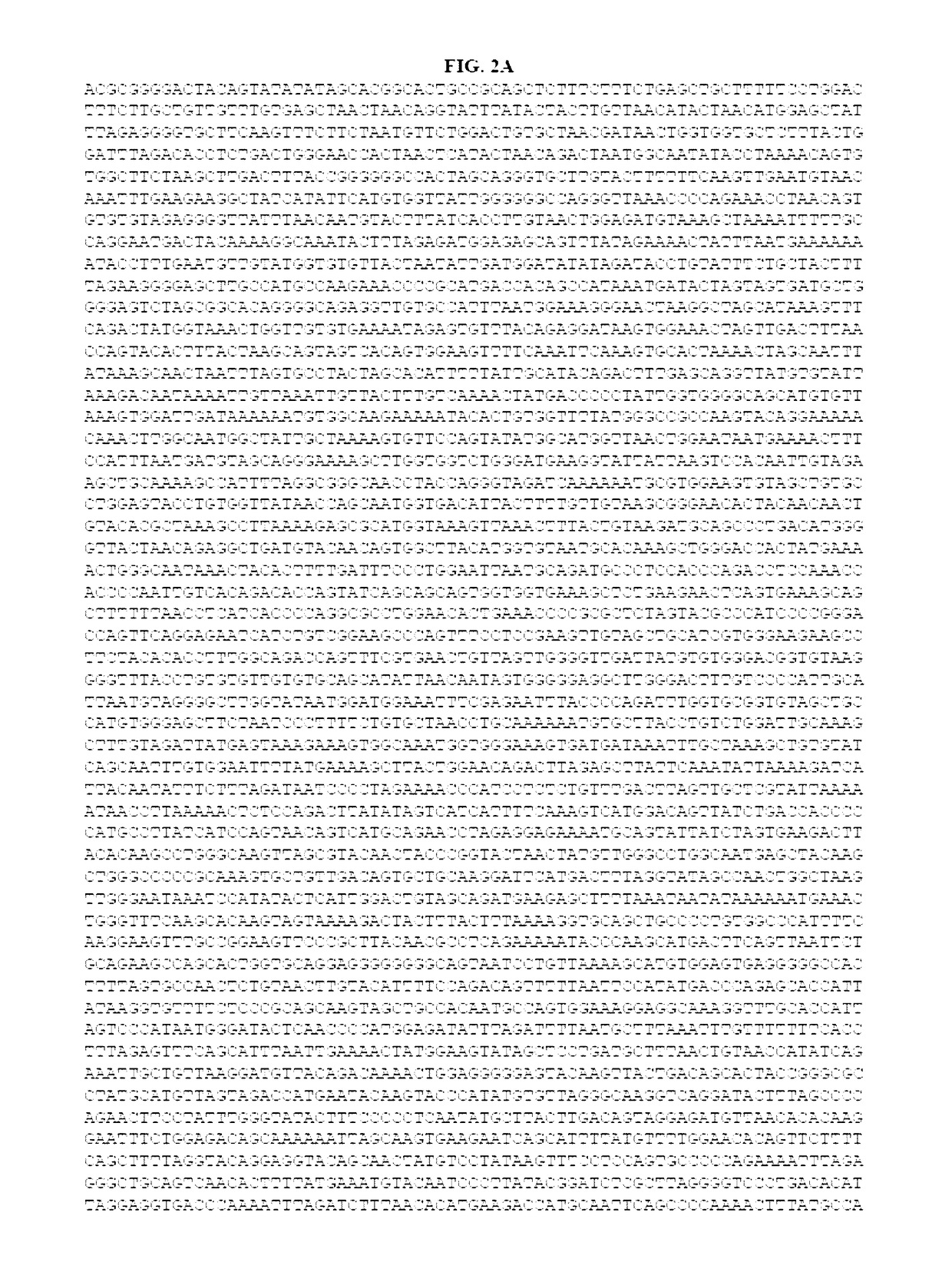Human erythrovirus
a human erythrovirus and human erythrovirus technology, applied in the field of human erythrovirus, can solve the problems of limited immunodiagnostic methods, increased risk of human erythrovirus transmission by blood/plasma products, and inconsistent abnormalities in li
- Summary
- Abstract
- Description
- Claims
- Application Information
AI Technical Summary
Benefits of technology
Problems solved by technology
Method used
Image
Examples
example 1
Detection of Parvovirus B19 D11 Variant by PCR
[0130]The D11 variant is detected from a biological source such as, for example, plasma, blood, bone marrow, or tissue sample for organ screening.
[0131]Approximately 1 ml of plasma or other biological source sample is added to approximately 200 μl of a buffered solution containing reagents designed to facilitate the precipitation of parvovirus B19 virions. To facilitate capsid disruption and pelleting, the buffered solution contains a chaotropic agent (e.g., guanidine isothiocyanate) and / or a detergent (e.g., sodium dodecyl sulfate (SDS)). Samples are mixed thoroughly by vortexing or inversion, and centrifuged. The supernatant is discarded and approximately 600 μl of a buffered solution containing a chaotropic agent such as, for example, guanidine thiocyanate is added to the pellet to completely disrupt the viral capsids. The parvovirus B19 DNA is then precipitated using, for example, approximately 700 μl isopropanol. Samples are thoroug...
example 2
Detection of Parvovirus B19 D11 Variant by Real-Time PCR
[0137]The D11 variant is also detected and / or quantified using real-time PCR, which is well known in the art.
[0138]Samples comprising viral nucleic acids are prepared as described above. Amplification is carried out in a PCR tube or plate using an appropriate volume of PCR working master mix. The working master mix comprises a buffer solution comprising i) D11 variant specific oligonucleotides of which one contains a fluorescent dye on its 5′ end and a quencher near or at its 3′end, ii) deoxyribonucleotides, and iii) a thermophilic DNA polymerase with 5′ to 3′ exonuclease activity. Five to 15 μL of the resuspended samples are added to the PCR tube or plate containing the working master mix for amplification. Using real-time PCR such as, for example, the AB7300 Real-Time PCR System (Applied Biosystems), the samples and all relevant controls are amplified.
[0139]Real-time PCR amplification conditions comprise, for example, i) a st...
example 3
Parvovirus B19 D11 Variant Infectivity Assay
[0141]To determine infectivity of the D11 variant, primer(s) and a probe are used to amplify and detect an amplicon from the D11 variant mRNA. The amplicon serves as an indicator of viral replication as described in Virology 301:374-380 (2002).
[0142]Cultured cells susceptible to parvovirus B19 infection or replication are either infected with D11 variant or transfected with the viral DNA. Following viral gene expression, the cells are lysed by a suitable buffer such as, for example, the guanidine-based buffer described above. Nucleic acid is recovered from the lysate by alcohol-based precipitation or by binding to a matrix in a column (e.g., Promega SV Total RNA Isolation System) or particle format such as magnetic beads (e.g., Ambion's MagMAX Viral RNA Isolation Kits). The recovered nucleic acid are washed to remove cellular debris and resuspended in a suitable solution, such as water or TE buffer. A fraction of the recovered nucleic acid...
PUM
 Login to View More
Login to View More Abstract
Description
Claims
Application Information
 Login to View More
Login to View More - R&D Engineer
- R&D Manager
- IP Professional
- Industry Leading Data Capabilities
- Powerful AI technology
- Patent DNA Extraction
Browse by: Latest US Patents, China's latest patents, Technical Efficacy Thesaurus, Application Domain, Technology Topic, Popular Technical Reports.
© 2024 PatSnap. All rights reserved.Legal|Privacy policy|Modern Slavery Act Transparency Statement|Sitemap|About US| Contact US: help@patsnap.com










